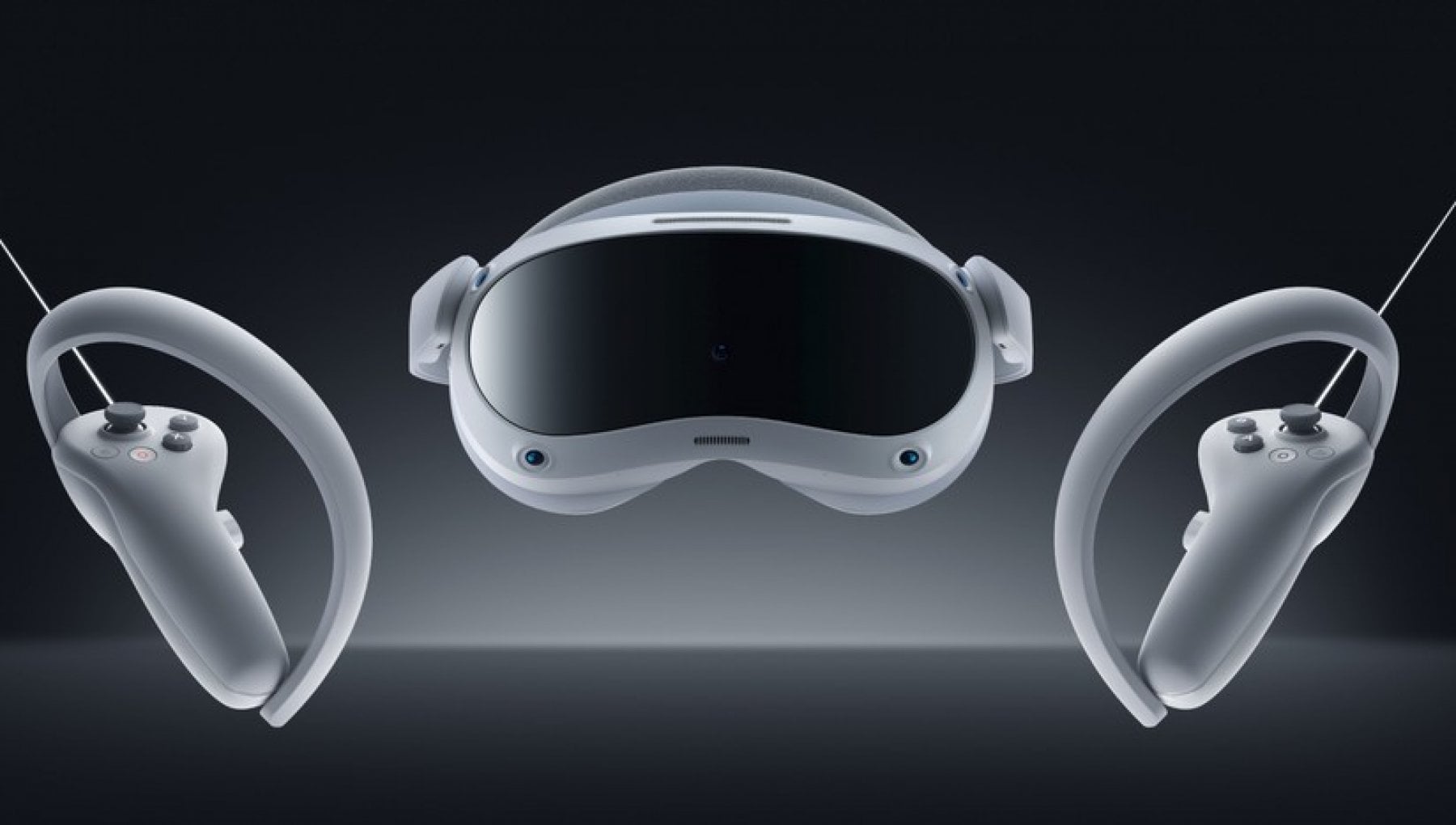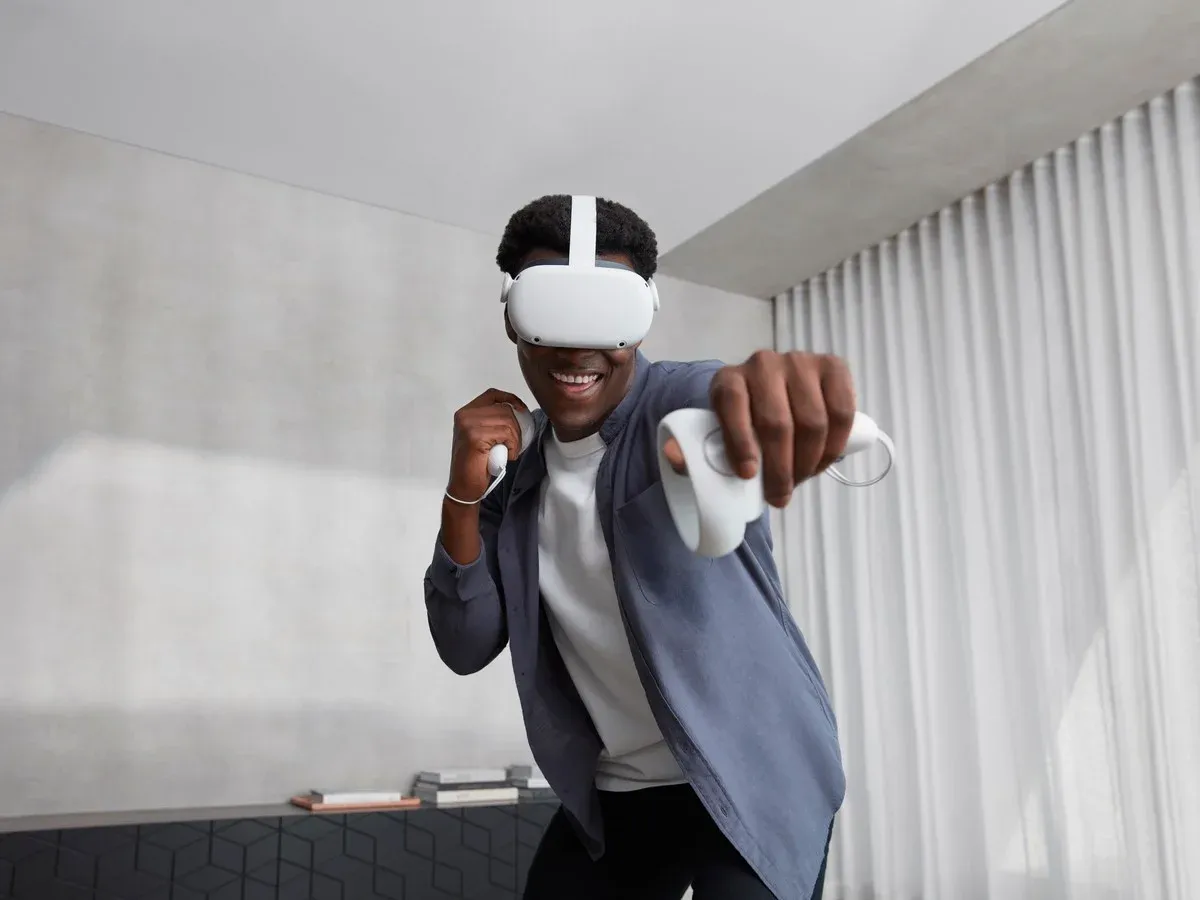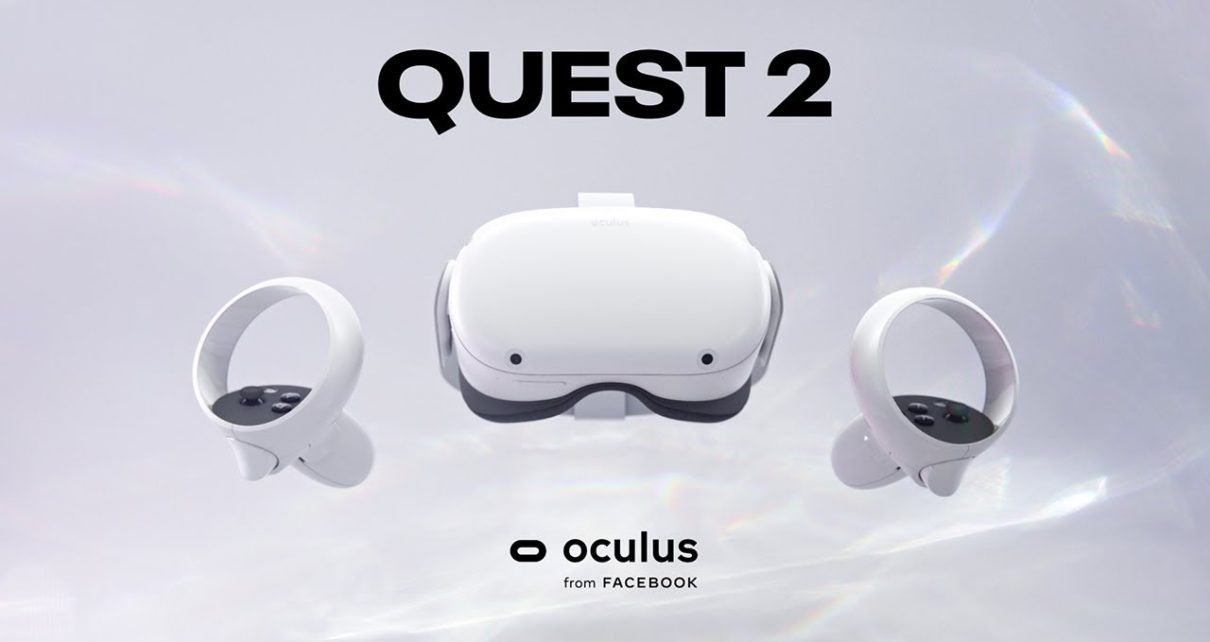Virtual reality (VR) has undoubtedly revolutionized how we see, feel, and interact with digital media. It's a rapidly growing industry with VR technologies becoming more available and affordable than ever before. Choosing the right VR headset is crucial, whether you're a casual user, a gamer, or a content creator, to ensure that you get the best experience possible. In this blog post, we'll compare PICO 4 and Meta Quest 2, two of the most popular VR headsets in the market. First, we'll provide a brief overview of both devices, and then we'll analyze their features, performance, advantages, and limitations to help you decide which one is right for you.
PICO 4: Redefining Mobile VR Experience
PICO 4 is the latest addition to the VR headset market that is quickly gaining popularity for its impressive features and affordable price tag. We'll explore what makes PICO 4 stands out and how it compares to other VR headsets on the market today.
Design and Comfort
PICO 4 has a lightweight and comfortable design that allows for extended use without causing discomfort. The headset features adjustable straps that can be customized to fit any head size, ensuring a snug fit that eliminates any light leakage from the outside world. The face cushion is soft, and breathable, providing ample airflow and reducing skin irritation.
Display
PICO 4 boasts a sharp, high-resolution display that delivers an immersive VR experience. The 2 LCD panel displays have a 2160x2160 pixels resolution each, delivering clear and detailed visuals. The pancake optics provide a wide field of view, minimizing flaring and maximizing immersion. The display also features anti-blue light technology, which reduces eye strain and fatigue during extended use.
Performance
PICO 4 is powered by a Qualcomm Snapdragon XR2 processor, providing smooth and fast performance. The processor is accompanied by 8GB of RAM, which ensures speedy app loading and multitasking capabilities. The 3 Degrees of Freedom (3DoF) controller provides accurate tracking and responsive controls, making it ideal for gaming and other interactive experiences.
Connectivity
PICO 4's wireless, standalone design eliminates the need for external devices or wires. The headset features Wi-Fi and Bluetooth, allowing seamless connectivity to other devices, such as smartphones and PCs. The device also features a USB-C port for charging and data transfer.
Sound Quality
PICO 4 has integrated high-fidelity speakers that deliver good sound quality and dual mics. However, sound enjoyment does not come up, and occasionally they seem to overdrive
Soar Into Virtual Reality with Meta Quest 2
Do you want to enhance your virtual reality experience? Check out Meta Quest 2! This all-in-one VR device offers an immersive experience that is sure to wow anyone who dares to challenge it.
Let's dive right in and explore what makes Meta Quest 2 so special.
Design and Comfort
The first thing to note about Meta Quest 2 is its sleek design. The headwear appears to be both visually appealing and physically comfortable. Additionally, it features three adjustable settings, eliminating concerns regarding external light infiltration.
Display
The display allows for a truly immersive experience. With an 1842x1920 pixels resolution, its visuals are sharp, clear, and detailed.
Performance
Powering this headset is a Qualcomm Snapdragon XR2 processor, providing smooth performance with minimal lag or frame drops, combined with 6GB of RAM for speedy app loading times and multitasking capabilities.
Connectivity
This VR device has wireless stand-alone capabilities that require no external devices or wires! You'll have full access to all available apps through built in Wi-Fi and Bluetooth connections; plus a USB-C port allows for charging and data transfer too.
Sound Quality
Meta Quest 2 integrated speakers deliver a good sound experience. It also provides enhanced spatial audio in contrast to the original Meta Quest.
PICO 4 vs. Meta Quest 2: Design and Comfort
Ready to enter the VR world? Compare the design of PICO 4 and Meta Quest 2, two of the best VR headsets in the market. Let's dive into their exterior design, build quality, comfort and fit, weight and size to see which comes out on top!
Exterior Design and Build Quality
Both PICO 4 and Meta Quest 2 have a sleek and modern design. PICO 4 boasts an elegant black-and-white color scheme, while Meta Quest 2 is white in color and has black accents. Both headsets are constructed with high-quality materials, which gives them a sturdy build.
Comfort and fit
When it comes to comfort and fit, both headsets fare well. However, PICO 4 takes the lead with its ergonomic design. The headset feels snug and secures against the head, and the weight distribution is impressive.
Meta Quest 2 is also comfortable but doesn't stand out concerning comfort level. Both headsets come with adjustable head straps, though PICO 4 offers additional nose pads and IPD adjustments.
Weight and size comparison
In terms of weight and size, PICO 4 is heavier and smaller than the Meta Quest 2 model. Depending on user preferences, these features can be great advantages as both VR headsets can feel much more comfortable on the head, especially during extended use.
Overall, both PICO 4 and Meta Quest 2 have impressive designs and high-quality builds. Nonetheless, when it comes to design, PICO 4 takes the lead due to its additional ergonomic features and weight advantage.
Regardless of the VR headset design, PICO 4 and Meta Quest 2 are guaranteed to provide an immersive VR experience that will transport you to another dimension.
PICO 4 vs. Meta Quest 2: Display and Graphics
Virtual reality experiences rely heavily on quality display and graphics to create an immersive experience. Both PICO 4 and Meta Quest 2 VR headsets have been highly praised for their advanced features and quality display.
We'll take a closer look into how PICO 4 and Meta Quest 2 perform in terms of display and graphics.
Screen Resolution and Refresh Rate
PICO 4 has a screen resolution of 2160x2160 per eye, whereas Meta Quest 2 has a slightly lower resolution of 1832x1920. This gives PICO 4 an edge in terms of the clarity of images, especially when it comes to reading texts or small details.
Both headsets have the option to switch between 72Hz and 90Hz refresh rates, ensuring visual smoothness with minimal jitter and lag. PICO 4 is unique because it has two panels, allowing it to use all of its pixels. In contrast, Meta Quest 2 only has one panel.
Quality of Colors and Brightness
Both headsets provide excellent color vibrancy and brightness levels, ensuring a stunning visual experience.
Nonetheless, PICO 4 has been praised for its ability to offer more natural colors with a higher contrast ratio. This helps create a more realistic and immersive VR experience.
Meanwhile, Meta Quest 2's OLED display allows for crisper images and darker blacks, creating a more vivid display.
Field of View
PICO 4 has a far greater field of view, coming in at 105 degrees, compared to Meta Quest 2's 90 degrees. This means the user has a more realistic and wider view, adding to the immersive experience.
PICO 4 and Meta Quest 2: Performance
The performance of any VR headset is of the utmost importance when assessing its usability and effectiveness. When it comes to PICO 4 and Meta Quest 2, both products deliver on this front in their own unique way.
Let's take a closer look at how these two headsets compare in terms of processing power, gaming experience, and controller quality.
Processing Power and Speed
PICO 4 and Meta Quest 2 are quite similar from a hardware standpoint. Qualcomm's processor powers in both headsets offer up to 8GB of RAM and feature an array of sensors for improved tracking accuracy.
Where they differ is in their display speeds; PICO 4 offers higher refresh rates of 72/90Hz compared to Meta Quest 2's 72HZ rate. This means that PICO 4 will provide a smoother visual experience with less jittering or lag in-game.
Gaming Experience
When playing games using an either headset, gamers can expect a truly immersive virtual reality experience with detailed visuals and accurate motion tracking.
PICO 4 will offer more clarity due to its higher resolution (2160x2160) compared to Meta Quest 2 (1832x1920). Additionally, PICO 4 will have an edge in terms of frame rate since it has a higher refresh rate than Meta Quest 2.
On the other hand, darker colors and crisp images are what really stand out when using Meta Quest 2, thanks to its OLED display technology. Ultimately, gamers looking for crisp imagery with minimal lag should opt for PICO 4, while gamers seeking vivid colors should go for Meta Quest 2 instead.
Controller Quality and Responsiveness
Both controllers offer precise motion tracking and accurate response times for a smooth gaming experience overall.
Meta Quest 2 controllers use infrared LEDs for better precision while also providing haptic vibrations that respond according to your actions within VR experiences, making them more realistic as well as tactile feedback from virtual buttons or triggers.
On top of that, each controller features one analog stick and buttons located equally around it to make controlling your adventures easier than ever before! The downside is that they run on AA batteries requiring frequent changing while being used heavily.
Regarding responsiveness, both controllers perform admirably with minimal delay between real-life movement and what is seen onscreen. However, some users may feel like there is still room for improvement depending on their preference levels.
PICO 4 and Meta Quest 2: Storage
Storage and battery life are crucial features to consider when choosing a virtual reality headset. With PICO 4 and Meta Quest 2 devices, users have two excellent options offering different storage and battery life levels.
We'll contrast these two VR headsets to see which offers users more value.
Storage Capacity Comparison
When it comes to storage capacity, PICO 4 and Meta Quest 2 offer different options. For instance, Meta Quest 2 doesn't include expandable memory. Rather, it features 128GB and 256 GB of storage.
In contrast, PICO 4 is available in two variants with either 128GB or 256GB of storage. This version has a storage capacity of 256GB, which can accommodate over 40 games, multiple movies, and various other applications.
Battery Life
When it comes to battery life, PICO 4 and Meta Quest 2 each offer distinct advantages. PICO 4 charges up to maximum capacity within less than three hours but then provides an average of 3 hours of usage time.
Also, Meta Quest 2 takes 2 to 2.5 hours to charge but lasts up to 3 hours before recharging. As such, users may want to consider their individual needs and preferences when deciding which headset will best suit them.
PICO 4 and Meta Quest 2: Price
Virtual reality technology has gained immense popularity in recent years, and two of the top VR headsets in the market are PICO 4 and Meta Quest 2.
We'll contrast the prices of these devices along with any additional add-on costs and provide a price vs. quality comparison.
Base Price
PICO 4 model with 128GB costs $430, while the model with 256GB storage costs $510. On the other hand, Meta Quest 2's prices start at $206 and average around $299 as of April 2023.
Additional Add-On Costs
Although both devices come with impressive features, additional add-on costs might be associated with each device that may affect the overall price. For the PICO 4 model, users may incur the cost of controller and headband strap replacement.
The Meta Quest 2 model requires a Facebook account to log in, which may be viewed as an additional cost by some users who are concerned about online privacy.
Price vs. Quality
PICO 4 offers better graphics quality and higher resolution compared to Meta Quest 2, making it an excellent choice for users interested in immersive gaming experiences. On the contrary, Meta Quest 2 offers a wider range of games and applications due to its association with the Mesta Quest store.
In terms of comfort, PICO 4 offers a different sense of comfort in comparison to the Meta Quest 2 model. However, Meta Quest 2 features a more user-friendly interface, a better hand controller, and an intuitive home screen.
Overall, the choice between PICO 4 and Meta Quest 2 devices depends on the users' needs and preferences. The first VR device is perfect for users interested in high-quality graphics and resolution, while the second offers better compatibility with a wider selection of games and applications.
However, users should consider the additional add-on costs associated with each device and weigh these against each offer's features and benefits.
Takeaway
Choosing the right VR headset depends on what the user wants to experience in virtual reality.
Before making a purchase decision, users should consider factors such as comfort, graphics, and compatibility with games and applications. We recommend users carefully weigh the features and benefits of both devices before making a final decision.
If you need more guidance on choosing the right VR headset for your business operations, we encourage you to CONTACT Vection Technologies.


